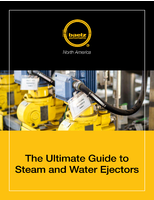Delcam Offers NC-PartLocator for Accurate Machining
Share:

Delcam has introduced a new software system, NC-PartLocator, to improve the speed and accuracy of production that can be achieved when machining large, complex or flexible components. The software, which has been developed in association with metrology specialists MSP, gives the ability to adjust toolpaths to the actual position of the part, rather than having to ensure that the piece is in exactly the nominal location specified in the CAM system. This adjustment can be made in the machine tool control much more quickly and easily than placing, and holding, the part in exactly the specified position.
The main benefit of NC-PartLocator is that it is much more user-friendly than alternative solutions. "Delcam has previously offered software that needed to be customised for each application," explained Peter Hammond from MSP. "Over a number of installations, we discovered that most of the manufacturing problems we were trying to solve were the result of similar issues. NC-PartLocator is an out-of-the-box application that can overcome the majority of these challenges, with a greatly-reduced need for customisation."
The NC-PartLocator process uses a probe fitted onto the machine tool to collect the necessary data. A probing sequence is created within the software to collect a series of points from the workpiece. This can be used by a range of best-fit routines within the software to determine the part's exact position. Any mismatch between the nominal position used in the CAM system to generate the toolpaths and the actual position of the workpiece can be calculated. The software then feeds the results to the machine tool control as a datum shift or rotation to compensate for the differences in location and alignment. This approach is much faster than trying to locate a heavy block of material into exactly the position specified, which can often involve many hours of adjustment and measurement.
NC-PartLocator can be used for the finish machining of components as well as for the production of tooling. For example, it is often necessary to drill into large plastic or composite components to a set depth to provide fixing holes. The flexibility of these materials means that expensive and complicated fixtures are needed to provide a consistent, flat surface for the drilling operation. Even then, inconsistency in the moulding process makes it difficult to ensure that the holes are all drilled to the same depth. By using NC-PartLocator, the surface of the component can be mapped, even if using more basic fixturing, and this surface used to calculate the drilling routine. This will give more reliable results than using the nominal data from the CAD model of the part.
A second problem that can occur when drilling composites is that the part can distort as the reinforcement is cut. This can be overcome with NC-PartLocator by using a two-stage drilling operation. The first sequence is done using an under-size drill, typically half of the size required for the final hole. The surface of the part is then scanned and the results used in a second drilling routine with the correct size of tool. Any distortion of the part will be picked up by the scan and the centres for the second series of holes can be adjusted accordingly.
NC-PartLocator can also be used to prevent tolerance build-up when undertaking a series of machining operations. For example, if a series of holes have to be produced around a central bore, the location of the bore can be confirmed before starting the drilling operations. Again, using the actual positions of the features that have already been machined will give more accurate results than using the nominal positions from the CAD file.
For further information on Delcam's software for quality control, please contact: -
Peter Dickin, Marketing Manager
Direct phone: 44 (0)121 683 1081
e-mail: pjd@delcam.com
Delcam plc
Small Heath Business Park,
Birmingham, B10 0HJ, UK
www.delcam.com




